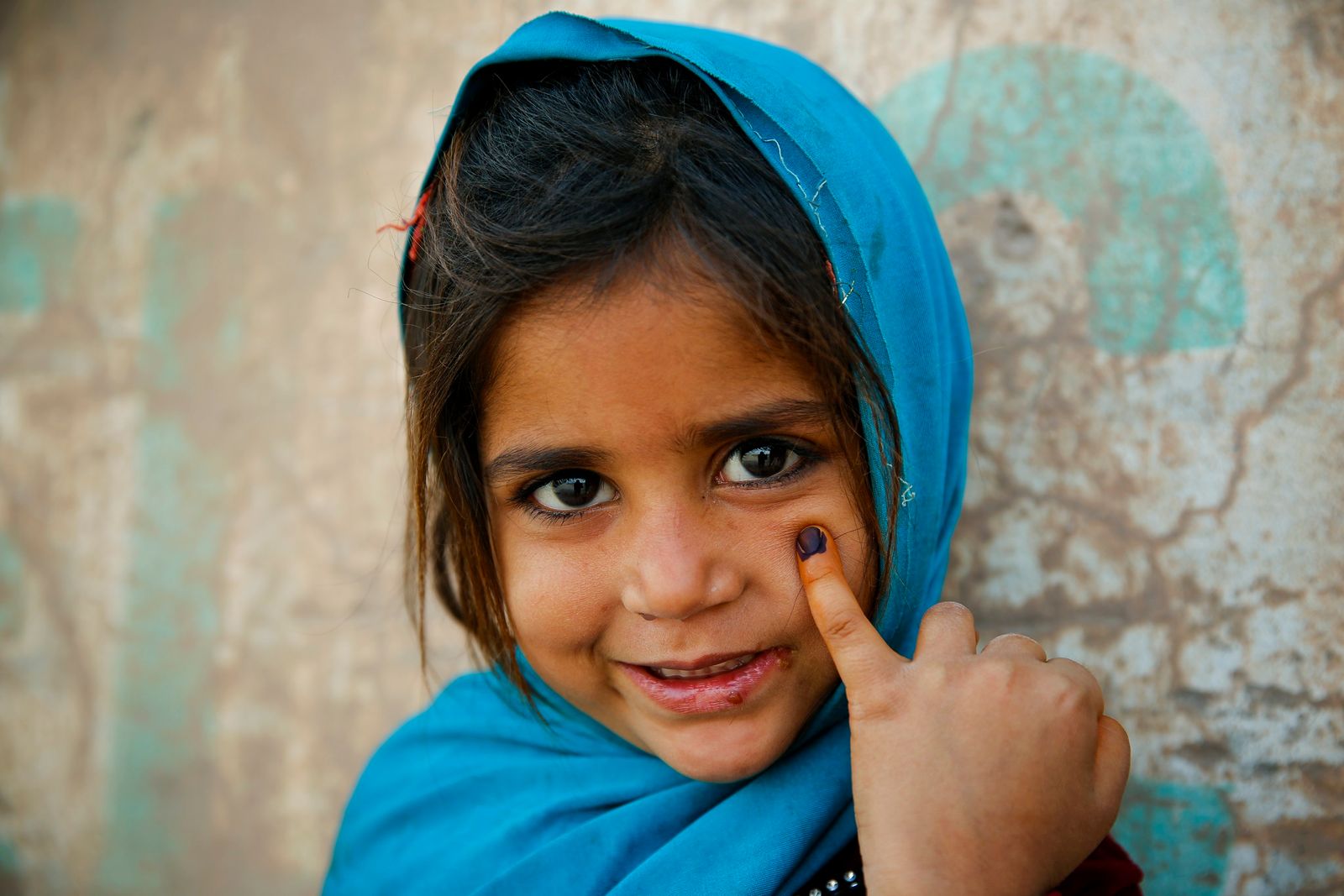Vaccine hesitancy has become a widely debated topic during the COVID-19 pandemic, but the problem is as old as the practice of vaccination itself. Even when vaccination has demonstrably reduced the burden of disease, such as in the case of polio, misinformation and hesitancy persist. Polio is no longer the threat it once was, thanks to the existence of multiple vaccines; however, the endemic continues, in part due to pervasive vaccine hesitancy in certain regions in Afghanistan and Pakistan. The World Health Organization (WHO) warns that if low vaccination rates persist, the localized endemic may quickly turn into a global epidemic. Actively engaging with community leaders in under-vaccinated areas and explicitly addressing vaccine misinformation are necessary to achieve goals of eradication.
History of the Eradication Effort
Poliomyelitis, more commonly known as polio, is an incurable, highly infectious disease that can cause paralysis. It spreads via person-to-person contact and through contaminated food and water. Most cases are asymptomatic or mild, often presenting with flu-like symptoms. However, the virus can attack the spinal cord, causing paralysis in 0.1-0.2 percent of patients. Paralytic polio can also affect muscles associated with breathing, ultimately resulting in death. Recovered patients may continue to suffer from post-polio syndrome, which presents with muscle weakness or paralysis.
Established in 1988, the Global Polio Eradication Initiative (GPEI) is a multinational global health effort spearheaded by the WHO in partnership with Rotary International, the U.S. Centers for Disease Control and Prevention (CDC), the United Nations Children’s Fund (UNICEF) and the Bill & Melinda Gates Foundation. Through vigilant surveillance of symptoms and dedicated vaccination campaigns, the GPEI has decreased the incidence of polio infection by over 99 percent globally and has suppressed the disease entirely in most countries.
The breakthrough oral polio vaccine (OPV), invented in 1963, has been the primary factor allowing for the extensive eradication in most countries. The vaccine consists of an attenuated (weakened) live virus that can replicate in the patient’s stomach lining, allowing them to build up immunity. It is the GPEI’s preferred vaccine for ongoing outbreaks and dedicated, preventative vaccination campaigns. However, in rare instances, during replication of OPV following immunization, the attenuated virus can mutate and regain its viral properties. Certain mutations can allow the virus to become neurovirulent, allowing it to attack the central nervous system, which results in paralysis and a condition called vaccine-associated paralytic poliomyelitis (VAPP). Other mutations allow it to become more transmissible, resulting in outbreaks of circulating vaccine-derived poliovirus (cVDPV), the symptoms of which are indistinguishable from wild poliovirus.
Now that wild poliovirus cases have been subdued, the importance of controlling vaccine-derived outbreaks is becoming a bigger challenge. However, the risk of vaccine-derived polio strains is only a significant threat in unvaccinated communities, where the attenuated virus is allowed to spread from person to person for long enough that it can mutate, usually over a period of 12-18 months. This condition is not met in communities with high vaccination rates, where the virus is unable to find suitable hosts to continue transmission. Despite these issues, the OPV is still considered safe by the WHO, CDC, and other healthcare authorities.
Wild polio remains endemic only in Afghanistan and Pakistan, where multiple challenges hinder the eradication campaign. The complexity of the issue cannot be fully evaluated here, but the majority of healthcare workers cite vaccine hesitancy as a major component. In this region, vaccine hesitancy stems from distrust of foreign aid, conspiracy thinking, and lack of education on vaccines. Efforts to restart the campaign after the COVID-19 pandemic are still met with opposition. For example, vaccine workers remain a target of militant groups that oppose either vaccination or the international involvement in polio campaigns.
The danger presented by fewer than one thousand wild polio cases per year, as is now common, should not be underestimated. The spread of cVDPVs beyond the region where polio is endemic indicates that a resurgence of the virus is possible.
Misinformation About Polio Immunization
Misconceptions about both disease and vaccine exist among unvaccinated individuals in Afghanistan and Pakistan, particularly in rural areas, where vaccination rates are lower. Surveys have demonstrated that while people are familiar with polio due to the campaign, knowledge about the clinical symptoms and specifics of the disease is lacking. In a 2014 survey conducted in Peshawar and Quetta, Pakistan, nearly 80 percent of participants did not know that polio was a lethal disease or thought that a cure existed for polio. Some improvement has been made in this regard, since in 2019 only 15.8 percent of respondents from Peshawar believed the disease was not severe. Nevertheless, this statistic remains too high if the goal is eradication of the disease. Furthermore, members of the Peshawar community continue to believe that the disease is not transmissible. Even among those who acknowledged that the disease is severe, a significant number said they were reluctant to vaccinate their child due to possible side effects of the vaccine.
Another prevailing misconception about the polio vaccine is that it can make people sick. Recent reports of vaccine-derived strains causing outbreaks in Pakistan are certainly not helping curb this belief. Understandably, the idea that a vaccine-derived strain can become infectious and even cause paralysis provokes fear and vaccine refusals. Therefore, misunderstanding of this situation must be delicately handled and future vaccination drives must be more explicit on the potential side effects of the vaccine.
An incident in Peshawar, Pakistan also strengthened conspiracies that the vaccine could make children ill. On the second day of a routine immunization campaign, hundreds of children were admitted to hospital for abdominal pain, diarrhea, and vomiting, thought to be caused by the vaccine. In response, angered family members set fire to a health facility in the city. Numerous sources cite this incident as a major setback in the vaccination campaign.
Furthermore, the need for multiple doses of the vaccine also sparks the false belief that the OPV used in Pakistan and Afghanistan is somehow substandard or intentionally weakened. Parents are therefore less likely to have their children vaccinated if multiple doses of the vaccine are required. Other misinformation about the vaccine itself includes that it is not halal because it contains pig’s blood or other prohibited substances. This may be thought because trypsin, an ingredient in the vaccine, is occasionally sourced from swine. This belief is further propagated by uninformed religious leaders.
The Role of Religious Leadership in Vaccine Hesitancy
In 2011, the CIA operation that uncovered Osama bin Laden’s location allegedly used a hepatitis vaccination drive as a cover to gather intelligence. Militants have since associated polio vaccination campaigns with covert operations led by foreign governments, and the Taliban have cited this specific incident in justifying their vaccination bans. Multiple bans have affected parts of Pakistan and Afghanistan in the following years, including Waziristan, Pakistan in 2012 and Nuristan, Afghanistan in 2013. The most recent ban in southern Afghanistan lasted from 2018 to 2021, and the WHO reports that it has consequently made 3.3 million children inaccessible to the eradication campaign. Moreover, as of 2012, frequent attacks on vaccination workers have been linked to militant groups. Over 70 healthcare workers have been targeted because they are perceived to be following a Western agenda, even when they are not foreigners.
Operating under intense mistrust of foreign aid in a context of war, militant groups help to encourage the conspiracy thinking that leads to vaccine refusal. For example, they actively spread the idea that the polio vaccine campaign is a cover for the mass-sterilization of Muslims, or that the vaccine is meant to infect Muslim children with human immunodeficiency virus (HIV). Consequently, only 25 percent of residents in high-conflict regions trust vaccinators, compared to 61 percent in low-conflict areas of Pakistan and Afghanistan.
Fatwas (religious decrees) banning vaccination efforts, such as the one passed by cleric Hafiz Gul Bahadur in North Waziristan, Pakistan, are sometimes written in protest to the armed conflict in the area. The decrees are a call on the government for better healthcare and a manifestation of resentment over the focus of international aid. The healthcare infrastructure in both Afghanistan and Pakistan is severely eroded due to prolonged conflict and lack of funding. Foreign aid is most interested in the eradication of polio, which is not without its merits. However, it is the perception of local leaders and their people that they have other health priorities, namely fatalities resulting from foreign drone strikes. As one Pakistani native declared, “America drops bombs on us Muslims but then says they are sending vaccines to help us?” In their view, international actors are incorrectly prioritizing polio eradication over other health concerns, without investing in other aspects of the healthcare system, which may seem self-serving. However, these decrees rarely gain their desired results since the government is not able to reallocate polio funds. Instead, these decrees validate and promote the resentment of foreign aid and vaccine hesitancy. In contrast, fatwas have been used in Saudi Arabia in 2005 to dispel conspiracy theories and enforce WHO recommendations regarding polio vaccination. Such an approach may be beneficial in Pakistan and Afghanistan, too.
Internationally funded vaccine efforts remain the driving force presently keeping the endemic at bay. Without an international eradication effort, the governments of Pakistan and Afghanistan would not be able to carry out vaccination, and polio cases would start to rise. If campaigns cease without achieving eradication, WHO estimates that the burden of polio could reach 200,000 cases per year within 10 years. Vaccination cessation in Nigeria in 2003 resulted in the disease quickly spreading to 16 previously polio-free countries, demonstrating the importance of vaccination.
Re-emergence of an Epidemic?
Fears that the virus can spread among pockets of unvaccinated populations, especially in the modern era of global travel, were reignited earlier this year. In June 2022, an unvaccinated individual from Rockland County, New York was diagnosed with paralytic polio caused by a vaccine-derived strain. The detection of polio in wastewater in Rockland County and Orange County further confirmed that the cVDPV has been circulating for some time. The detection of poliovirus in wastewater in London, England between February and June 2022 has also prompted healthcare experts to advocate for increased vaccine coverage.
However, there is hope. The GPEI is introducing a novel oral polio vaccine (nOPV) that poses a smaller risk of mutating and causing cVDPVs. Vaccination drives are restarting in Afghanistan and Pakistan following a brief cessation during the COVID-19 pandemic. After seizing power in Afghanistan in August last year, the Taliban has agreed to cooperate with the World Health Organization, despite previously opposing vaccination efforts.
Unfortunately, violence against vaccine workers persists in 2022. In February of this year, eight workers were killed in the Takhar province of Afghanistan. Meanwhile, in north-west Pakistan, two policemen guarding a vaccination team were shot in August. Perhaps a cooperation with the Taliban will lead to fewer of these attacks in the future.
Furthermore, working with local leaders helped polio eradication efforts in India, which faced similar vaccine hesitancies. This suggests that the endorsement of religious and tribal leaders helps combat vaccine hesitancy and increases vaccination rate among the skeptical. Targeted mass media campaigns, with information focused on the gaps in knowledge, will also help toward the goal of eradication.
The WHO estimates that the vaccination efforts since 1988 have helped save an estimated 20 million people from becoming paralyzed by polio, and saved the lives of 1.5 million children. Eradication of a human disease has been achieved only once before, but with global effort and vaccines available, it might just be achieved again with polio.
Cover photo: Child shows off the ink mark on her finger, confirming she has been vaccinated for polio during a campaign in Peshawar, Pakistan. Photo by Asad Zaidi. Accessed via Flickr (CC BY 2.0).




